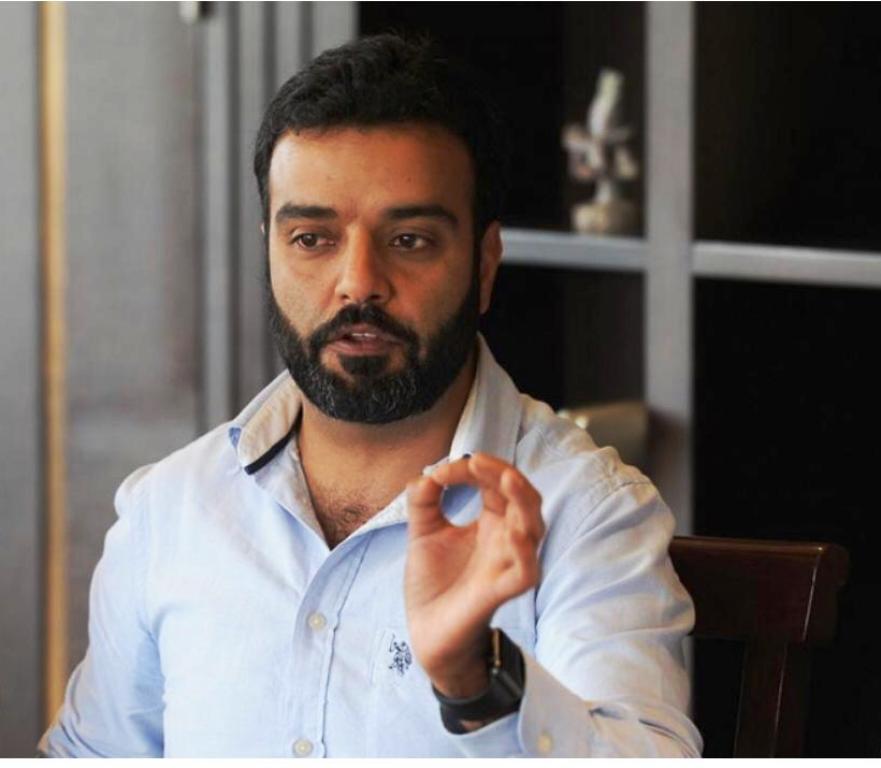by Masood Hussain
SRINAGAR: For this interesting Lok Sabha election, the entire media attention remained focussed at Kashmir. From the TV anchors to the star campaigners in mainland India, it was Pulwama attack and the security concerns, Balakote and Uri.
In this perhaps the most unreasonable focus, the media lost the best story in a desert, the Ladakh. It was the first Lok Sabha election in the desert after it emerged as Jammu and Kashmir’s third administrative division in the last winter.
Understanding The Region
The region is a major territory of the state. Perhaps the rest of the state is slightly smaller than Ladakh. But the scarcely populated region has a tiny population. In 2011, the head-counters recorded 274289 people living in the region with 127296 (46.40%) Muslims as Buddhists played second fiddle with 108761 (39.65%).

The region, a separate agro-climatic region, comprises two districts- the Buddhist dominated Leh that has the projection of being the capital of Ladakh and the Muslim majority Kargil. The districts have sizable chunks of minorities – Kargil has Buddhist Zanskar belt and Leh has a lot of Muslims living within the city.
Both the districts have two berths each in the state assembly – Nubra, Kargil, Zanskar and Leh. Interestingly, both are literally border belts. Leh has borders with China and Pakistan and half of Kargil is within the reach of Pakistani gunners.
Historically the two districts have been competing with each other. But the Leh has emerged a huge tourist spot and the most prosperous belt in the desert region. Ladakh had an impression that Kashmir was discriminating against her and on that basis they were seeking a UT status. This tension led to the setting up of Ladakh Autonomous Hill Development Council (LAHDC) in Leh, a structure that was later adopted by Kargil as well. These are two elected bodies tasked to manage the local area development and the delivery of social services.
Last winter, the government declared the region a separate division. The two districts fought with each other over headquarters of the division. There were protests and political mobilisation that the government should not resort to any discrimination in identifying the headquarters. Many suggested that a new town can be established that is equidistant to both. But the government finally ruled that Ladakh divisional headquarter would be moving between the two districts!
Interesting Politics
The fascinating part of the high altitude desert politics is that religion plays a huge role. In Leh, it was the Ladakh Buddhist Association (LBA) that sets the debate for many decades now. Off late, however, the monks have started coming out of politics and staying put at their monasteries. By and large, the politics of Leh is with the political beings of the district.

But that is not the situation in Kargil. This Shia Muslim district has two influential religious institutions – the Imam Khomeini Memorial Trust (IKMT) and the Islamia School. Dominated by the powerful Aghas’, these two institutions decided the fate of politics in Kargil.
In assembly elections, the two districts would send their representatives strictly as per the demography of the area and the politics of the two distinct faiths that share the same geography and the culture.
However, during Lok Sabha polls, the two districts would remain at loggerheads. The key reason is that apart from climate, geography and culture, the only other thing that binds them together is the Lok Sabha seat. The two districts have the only berth in the Lok Sabha.
Historically, in every Lok Sabha election, there were two main candidates, one each from Kargil and Leh. Since the number of votes is almost equal, every time, every district tries to cut the votes of another district so that their own candidate wins. The region has less than 175 thousand votes. Last time, when the most respected Buddhist leader Thupstan Chhewang won, his victory was by 36 votes. Earlier in 2014, he had won the seat as an independent with an impressive margin as the NC candidate in Kargil was cut significantly by an independent.
Chhewang resigned from BJP and from Lok Sabha in protest in November 2018. He had problems with the BJP leadership that was bypassing him in the region and manipulating the local politics. His resignation was not a major blow to BJPs high altitude politics.
Many think, the announcement of a division by the government to the region – though it was already discussed and decided about by the elected government earlier, was one key factor to offset the damage by the leader’s resignation. Now the BJP wants to win the seat by whatever means.
Interesting Contest
BJP fielded Tsering Namgyal, the chief of the LAHDC Leh. He is facing Congress’s Rigzin Spalbar, an articulate and well-meaning Congressman who had earlier led the LAHDC twice. The contest between the two Buddhists is expected to divide the Leh votes. Both the parties are powerful on the ground though the LAHDC is with the BJP, right now.
The situation in Kargil is not different, either. Here, a former Congress minister and many times LAHDC chief, Asgar Ali Karbalie is contesting as an independent. He is facing a small-time journalist Sajjad Hussain, also an independent. Karbalie is an interesting character. He gets in and comes out of Congress at will and the party is not in a position to take action against him.
What is interesting is that Karbalie is being supported by the powerful IKMT, the most influential religious organisation. The Congress has not gone against him despite the fact that he is contesting against the party’s official candidate.
Sajjad is being supported by the Islamia School, the NC, the PDP and even the Shah Feasal’s party.
PDP, NC Boycott
For the first time in history, NC and PDP – the two main claimants to the regional party status, and even the top Congress leadership avoided campaigning for anybody in the region. Only BJP has sent a number of its leaders to the region for the support. Its cadres are working at gross root level as well. They had a good rally in Kargil on Wednesday.
Congress state president G A Mir recently alleged the PDP was conspiring to divide the Ladakh votes so that BJP gets an edge.
“Backing independent candidate in Ladakh, PDP under a well-planned conspiracy was strengthening the communal forces to serve its vested interests, but the people of Kargil and Ladakh will jointly defeat the designs of both PDP and BJP,” Mir was reported to have said. But he did not explain why his party avoided going against his own former minister who is in the contest against the official candidate.

Ladakh has been a Congress stronghold as it won the seat five times since 1967. But this time, nobody knows who wins this seat.
This has irked NC leader Omar Abdullah who publicly said the Congress was giving sort of walkover to BJP. “The Congress was in with a fighting chance in 4 of the 6 seats and in 3 of these the BJP was the main opponent,” Omar tweeted recently. “It’s inexplicable how the BJP was simply given a walkover as far as the optics of the campaign were concerned.”
Campaign Issues
What is more interesting is that the region’s politics has nothing to do with Hindutva or the state’s special position. They contest on personal influence and the local allegiances. It is mostly development. Kargil lacks air connectivity and it is a major poll issue. In Leh, the UT status is a major slogan.
This has created an interesting situation. Earlier the two districts were fighting each other by triggering a sort of polarisation on basis of faith. Now the districts have a crisis within. Nobody knows who wins because the limited votes of the region have four equal stakeholders.















